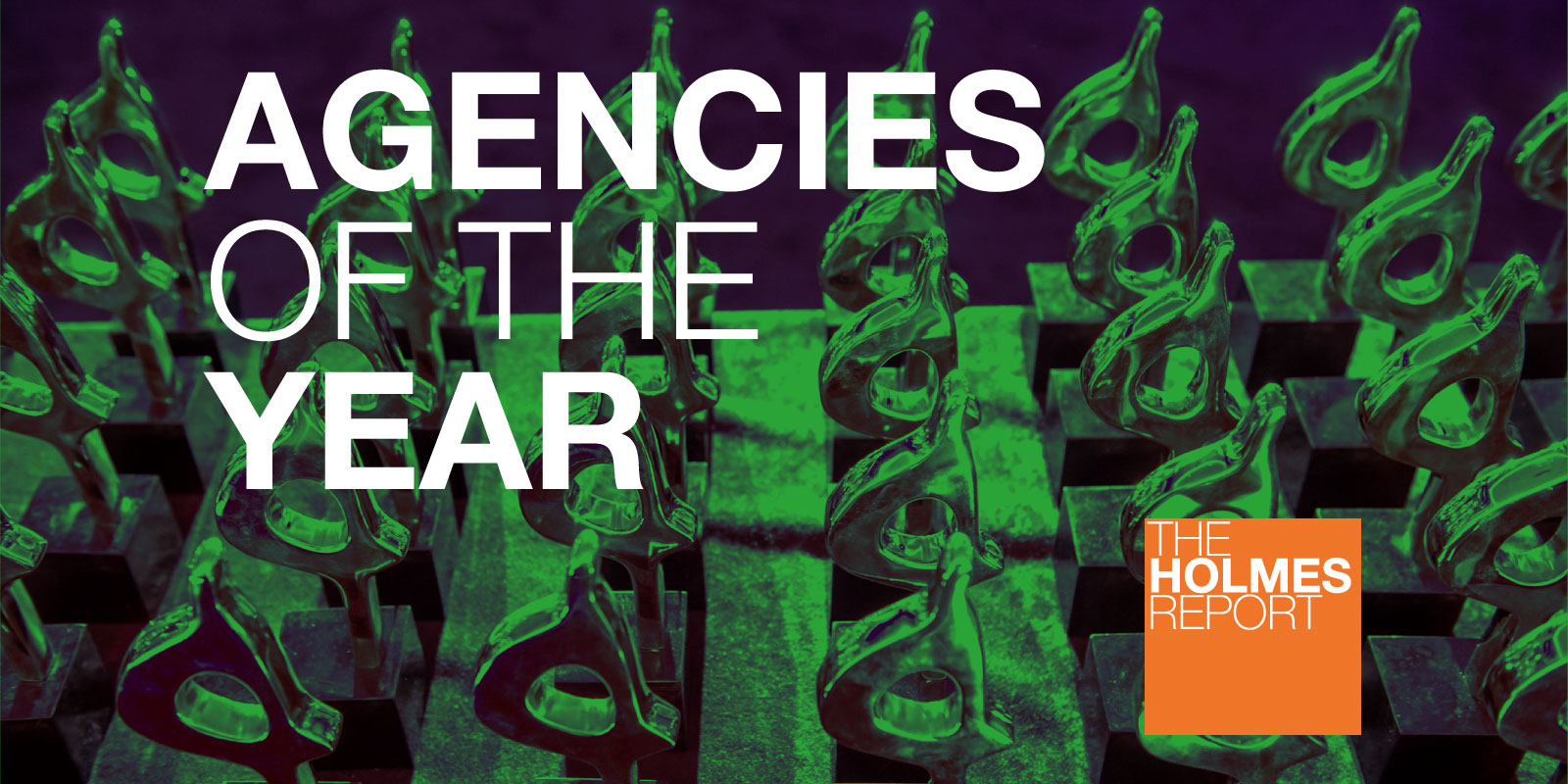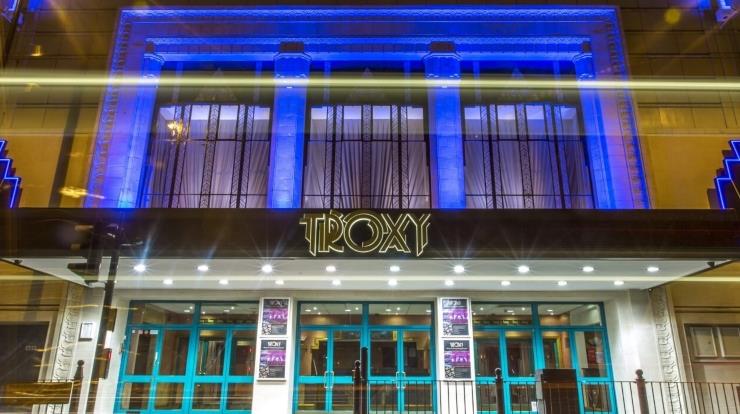
 Podcasts
PodcastsCatch the latest PR news & updates with PRovoke Media's PR Podcasts. Lifting the lid on key industry stories & trends, join our listeners of PR podcasts today.
 Videos
VideosLatest video interviews and campaigns from PRovoke Media, previously known as the Holmes Report.
Long-form journalism that analyzes the issues, challenges and opportunities facing the business and practice of PR.
 Profiles & Interviews
Profiles & InterviewsExplore PR profiles and interviews with leaders from the marketing and PR worlds.
 Crisis Review
Crisis ReviewPR Crisis & Business Crisis review. PRovoke Media's annual analysis of the top reputation crises to rock the corporate sector. Read on here.
 Coronavirus
CoronavirusPRovoke Media's coverage of the Covid-19 crisis, focusing on corporate communication, public affairs & PR industry fallout.
 Trend Forecasts
Trend ForecastsPRovoke Media's PR Trends round up. PRovoke Media's annual forecast of PR trends and news that will impact the PR world in the year ahead...
 Social & Digital
Social & DigitalDedicated to exploring the new frontiers of PR as it dives deeper into social media, content and analytics.
 Technology
TechnologyOur coverage of key technology PR trends and challenges from around the world of digital communications.
 Consumer
ConsumerFrom brand marketing to conscious consumerism, coverage of key marketing and PR trends worldwide.
 Employee Engagement
Employee EngagementPRovoke Media's coverage, analysis and news around the rapidly-shifting area of employee engagement and internal communications.
 Sports Marketing
Sports Marketing Sports PR news, diversity & inclusion trends, views and analysis from PRovoke Media. Subscribe today for the very latest in the world of sports communications.
 Global PR Agency Rankings
Global PR Agency RankingsPRovoke Media's definitive global benchmark of global PR agency size and growth.
Enter PRovoke Media's 2024 Global 250 Agency Ranking and/or our Agencies of the Year competitions now.
 Agencies of the Year
Agencies of the YearPRovoke Media's annual selections for PR Agencies of the Year, across all of the world's major markets.
 Innovator 25
Innovator 25PRovoke Media profiles marcomms innovators from across North America, EMEA and Asia-Pac.
 Creativity in PR
Creativity in PRIn-depth annual research into the PR industry's efforts to raise creative standards.
 Asia-Pacific Communication Index
Asia-Pacific Communication IndexAPACD/Ruder Finn annual study of Asia-Pacific in-house communications professionals.
 SABRE Awards
SABRE AwardsThe world's biggest PR awards programme, dedicated to benchmarking the best PR work from across the globe.
 PRovokeSummit Global
PRovokeSummit GlobalThe biggest PR conference of the year, a high-level forum designed to address the critical issues that matter most.
 PRovoke Media Regional Series
PRovoke Media Regional SeriesA global network of conferences that explore the innovation and disruption that is redefining public relations.
 Agencies of the Year
Agencies of the YearUnrivalled insight into the world's best PR agencies, across specialist and geographic categories.
 Roundtables
RoundtablesOur Roundtables bring together in-house comms leaders with PR firms to examine the future of communications.
 Agency Playbook
Agency PlaybookThe PR industry’s most comprehensive listing of firms from every region and specialty
.jpg) All Jobs
All JobsFind the latest global PR and communications jobs from PRovoke Media. From internships to account executives or directors. See all our PR jobs here.
PRovoke Media's editorial series published in collaboration with partners.

Our 2017 North America PR Agencies of the Year are the result of an exhaustive research process involving more than 150 submissions and 50 face-to-face meetings with the best PR firms across the US and Canada.
Analysis of each of the Agencies of the Year for every category can be accessed via the navigation menu to the right or here.
Winners were unveiled at the 2017 North American SABRE Awards, at Cipriani 42nd Street in New York on May 2.
There was a time when the Bateman Group was looked on as a challenger brand in Silicon Valley — a scrappy upstart with a passionate founder. Over the last decade, the Bateman Group has become a steady PR force that consistently delivers on respectable growth and noteworthy work. This continued into 2016 when the firm hit 21% growth reaching $10.5m, shedding the “boutique” qualifier.
The creativity of its thinking was demonstrated in its work for security startup Area 1 that resulted, not only two feature stories in the New York Times, but also a request from a Hollywood production house for the rights to buy the story. When Hollywood notices, you’ve probably crafted a very good narrative. Other clients include Google, LinkedIn, L’Oreal, Betterment, Ultimate Software, Virtustream, QuickBase, Tegile, Relay Networks and Atlassian.
Interestingly, in 2016 Bateman split its enterprise practice in two: the Future of Work (products that touch on workplace productivity and collaboration) and the New Stack (products that make data processes and center more efficient) to give clarity and focus to its domain expertise.
The firm also actively advocates for the industry to back away from the antiquated relationship, press release and persistence trifecta to yield media coverage — and in doing so has taken on the challenge of educating executives on the realities of the new media environment. Bateman also added an Innovation Lab practice this year, which includes clients with truly disruptive technologies like Ginkgo Bioworks, a startup that designs custom microbes across multiple markets to develop new organisms that replace technology with biology .
CEO & founder Fred Bateman continues to helm the firm with support from partner/president Bill Bourdon, partner/GM Tyler Perry and EVP Syreeta Mussante. New hires include former IDG News Service journalist James Niccolai as content and media strategy director adding to the 53 full-time employees across offices in San Francisco and New York. — AaS
Highwire (Independent)
It was more than a decade ago the principals of Highwire came together to “do things differently” which has come to mean building a hot tech shop with serious staying power. The firm is now up to $14m (up 28% from 2015) shooting right the boutique range and on track to being a formidable mid-size tech player with offices in San Francisco, New York, Boston and Chicago.
Its client portfolio speaks to Highwire’s standing within the tech PR market: IBM, AOL, Twilio, Veracode, Wi-Fi Alliance, Trustwave, Norwest Venture Partners, along with new wins Atlassian, GE, AppDynamics, Sprinklr, ForeScout, among others. The firm’s work on Twilio’s IPO last year was shortlisted by SABRE judges for its methodical strategy that resulted in a remarkable day of IPO coverage (exceeding its peers) while cementing its dominant share of voice in a new category. For the Annual Highwire RSA Security Event, the firm partnered with Christian Science Monitor’s Passcode to do live interviews and podcasts with top executives from prominent security companies about the nation’s state of cybersecurity, threat intelligence and AI.
While many tech firms confront challenges when expanding to new markets, Highwire’s New York office — opened in 2015 — doubled its headcount to 20 employees. Similarly in Boston the firm made investments to build a burgeoning team of four and growing.— AaS
The Hoffman Agency (Independent)
The ultra-competitive Silicon Valley PR market tends to reward two types of firm: the titans that have ruled with their seemingly unbreakable networks and, of course, the hot boutiques of the moment. This is a market that can be unforgiving to the firms that fall in-between — which makes Hoffman’s Agency comeback arc all the more impressive.
In 2016, US revenues grew a respectable 12% but it’s worth taking a wider lens to grasp how immensely founder Lou Hoffman has overhauled the firm since 2012. That year, Hoffman had declined to $2.3m in the United States with a significantly weakened brand. Hoffman undertook the painful process of restructuring the firm for sustainability. Since then, Hoffman has grown nearly 100% landing at $4.5m in 2016.
The caliber of its work has fueled much of this growth. Since 2013, judges for the Innovation SABRE awards have pointed out that Hoffman consistently punches above its weight. Among its standout work is strategically finessing content to optimize search rankings for clients like Sony Music, and in previous years, Endicia. In winning the Business France, Hoffman exploited its single P/L to service the multifaceted account across US, EMEA and Asia-Pacific.
Looking ahead, Hoffman launched a new practice for Internet of Things with an eye towards becoming Silicon Valley’s ‘go-to’ agency in this area. Is current IoT clients includes Nokia, Atomiton, NXP and Withings. Hoffman’s content offering separates from the pack with a combination of storytelling expertise (led by its clever Periodic Table of Business Storytelling) , making sense of complexity, SEO function and visual design capabilities.
In addition to Hoffman, the leadership team includes Steve Burkhart as US president, Kymra Knuth as EVP and Steve Jursa as EVP — the team that has made the 30-year-old firm the best that it’s probably ever been. - AaS
Method Communications (Independent)
There’s an allure— and a danger — of growing too quickly in this business. The more prudent firms tend to take their foot off the gas after a growth spurt to re-calibrate for the future. For Method Communications, 2016 was just that, a building year.
Some of this was self-imposed — the firm shot straight past $10m in about five years — so a breather was certainly in order. But some of it was the volatility of 2016: global equity markets reacted to slowdowns in China and India, delayed IPO filings and slower VC investments. Of course the rallying markets following Trump’s win did open an IPO window where Method executed on listings for two of its clients: Nutanix and Trivago.
Growth was up a modest 4% to $10.1m across its two offices, 30 people in San Francisco and 30 people in Salt Lake City (the firm opted to close its Los Angeles outpost in 2016 but a handful of staff remain there). The management has remained stable with co-founders David Parkinson and Jacob Moon at the helm with partners Alex Koritz, Carolyn Guss, Heather England.
While the firm prioritized strategic hiring and long-term initiatives in 2016, its eye hasn’t dropped off doing excellent work. Take, for example, Bolt Threads that worked with Method for a splashy launch in 2015, but since then opted to keep a quieter profile. That opened the door for competitors, compelling the company to re-engage Method to launch its first product, a synthetic spider silk tie to coincide with the CEO’s talk at SXSW. The coverage featured a blend of consumer, science, tech and business outlets highlighting that Bolt Threads was first to market and the leader in an increasingly competitive space. For its longest-tenured client Vivint, Method secured a print feature in Forbes with the headline “This Utah Company Has Emerged as the Largest Smart Home Player.” The profile — the groundwork for which was laid by Method and Vivint over several years by cultivating a relationship with reporter Aaron Tilley — provided the most comprehensive account of Vivint’s story to date. — AaS
WE Communications (Independent)
Waggener Edstrom rebranded as WE Communications toward the end of 2015, promising a renewed focus on the core business—including its fast-growing content creation and digital and social efforts—while forming partnerships with specialist firms (research giant YouGov and brand consultancy salt, for example) to ensure it can deliver the breadth of capabilities clients are looking for. The moves appear to have turbo-charged what had been sluggish growth, with fee income up 4.5% in 2016 and new business from the likes of CA (replacing Edelman and Zeno), Comba Telecom, St Michelle Wine Estates, and Stack Overflow.
Technology remains at the core of the firm’s business, and its work for Microsoft continues to stand out, including this year’s Windows 10 update campaign and media relations efforts to connect the company with developers and IT professionals. Other highlights include global work for Honeywell, including the company’s connected home initiatives; targeting the CIO for business management software Apptio; and brand-building for early-stage satellite technology company Kymeta. But much of the firm’s work beyond the tech sector has an innovation focus: telling the technology story for Volvo as it seeks to revive its brand in the US, or working at the convergence of health and tech.
There’s a new thought leadership approach too, which includes a “Brands in Motion” study, a “Stories in Motion” analysis of how the media ecosystem helps brand move forward, and a new (appropriately named) “Momentum” methodology that starts with insight, adds context and inspiration, proceeds to action and culminates in Impact.
Finally, there’s a host of new talent to fuel all this forward progess: Edelman veteran Alan Vandermolen joined a president of international and the WE+ network; Catherine Allen, formerly of Shift, leads the Boston office and the push into health tech; Scott Friedman, formerly of Text 100 is playing a lead role on the Microsoft account; and Stephanie Marchesi of FleishmanHillard is the new president for the eastern region and the health sector.

The PR industry’s most comprehensive listing of firms from every region and specialty.















Intelligence and insight from across the PR world.
About PRovoke Media Contact Us Privacy & Cookie PolicyWe feel that the views of the reader are as important as the views of the writer. Please contact us at [email protected]
Signup For Our Newsletter Media Kits/Editorial Calendar Jobs Postings A-Z News Sitemap© Holmes Report LLC 2024